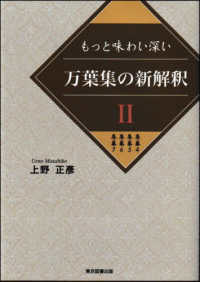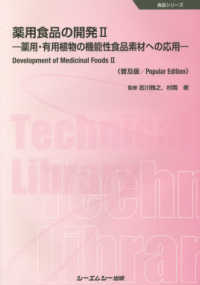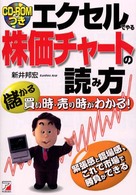Description
The Royal Marsden is the world’s first hospital dedicated to cancer diagnosis, treatment, research and education – a centre of excellence with an international reputation for ground-breaking research and pioneering the very latest in cancer treatments and technologies, as well as specialising in cancer diagnosis and education.
This companion volume to the internationally successful The Royal Marsden Manual of Clinical Nursing Procedures is designed to support practitioners who work specifically with oncology patients by providing detailed evidence-based procedures and rationale, and problem-solving guidance on all aspects of oncology nursing.
The Royal Marsden Manual of Cancer Nursing Procedures:
- Is organized and structured to represent the needs of the patient along their care pathway
- Provides the latest evidence underpinning all procedures
- Includes information on haematological procedures; pain assessment and management; wound care; oncological emergencies; and end-of-life care
- Gives detailed guidelines on supporting patients living with cancer with practical information on such things as benefits, exercise and nutrition.
The Royal Marsden Manual of Cancer Nursing Procedures is an invaluable, definitive resource for all those involved in the provision of cancer care and support to patients and their families.
Table of Contents
Foreword xi
Acknowledgements xii
List of contributors xiii
List of abbreviations xv
Quick reference to the procedure guidelines xvii
How to use your manual xix
Introduction xxi
1 Diagnostic investigations 1
Overview 2
Diagnostic tests and investigations 2
Tumour markers 4
Cervical uterine smear 8
Diagnostic radioisotope procedures (nuclear medicine) 12
Transrectal ultrasound (TRUS) prostate biopsy 18
Flexible cystoscopy 24
Breast diagnostics 36
Clinical breast examination 38
Core biopsy 40
Breast fine-needle aspiration (FNA) 43
Breast punch biopsy 45
Nipple discharge smear 47
Genetic testing 48
Websites 52
References 52
Procedure guidelines for Chapter 1
1.1 Cervical uterine smear using liquid-based cytology 9
1.2 Unsealed radioactive sources for diagnostic investigations 16
1.3 Transrectal ultrasound (TRUS) prostate biopsy 21
1.4 Flexible cystoscopy 27
1.5 Flexible cystoscopy with stent removal 30
1.6 Flexible cystoscopy with bladder biopsy 32
1.7 Flexible cystoscopy with argon plasma coagulation (APC)/cystodiathermy 35
1.8 Clinical breast examination 38
1.9 Core breast biopsy 41
1.10 Breast fine-needle aspiration (FNA) 43
1.11 Breast punch biopsy 45
1.12 Nipple discharge smear 47
2 Haematological procedures 57
Overview 58
Bone marrow procedures 58
Aspiration and trephine biopsy 58
Bone marrow harvest 67
Apheresis 72
Ribavirin administration 80
Pentamidine isetionate administration 84
Websites 87
References 87
Procedure guidelines for Chapter 2
2.1 Bone marrow aspiration and trephine biopsy 64
2.2 Bone marrow harvest 68
2.3 Apheresis 76
2.4 Ribavirin administration 82
2.5 Pentamidine isetionate administration 85
3 Cancer pain assessment and management 91
Overview 92
Cancer pain assessment and management 95
Pain management 97
Acupuncture 104
Interventional techniques for managing complex cancer-related pain 107
Single nerve blocks and injections 108
Regional peripheral and plexus nerve blocks and infusions 108
Neuraxial (spinal) blocks: epidural and intrathecal analgesia 109
Entonox (nitrous oxide) administration 120
References 125
Procedure guidelines for Chapter 3
3.1 Acupuncture: preparation and administration 106
3.2 Epidural/intrathecal sensory blockade: assessment 114
3.3 Epidural/intrathecal exit site dressing change 115
3.4 Epidural/intrathecal catheter removal 115
3.5 Entonox administration 123
4 Administration of systemic anticancer therapies 131
Overview 132
Systemic anticancer treatment 132
Safe handling of hazardous drugs 133
Administration of cytotoxic medications by nurses 137
Intravenous administration of systemic anticancer therapy 138
Extravasation 142
Oral administration of systemic anticancer therapy 156
Intramuscular and subcutaneous administration of cytotoxic drugs 162
Topical application of cytotoxic drugs 164
Intrathecal administration of cytotoxic drugs 165
Intrapleural instillation of cytotoxic drugs 168
Intravesical instillation of cytotoxic drugs 169
Intraperitoneal instillation of cytotoxic drugs 172
Intra-arterial administration of cytotoxic drugs 173
Side-effects of chemotherapy 175
Haematological side-effects 176
Fatigue 176
Gastrointestinal side-effects 176
Adverse drug reactions 177
Neurotoxicity 177
Mucositis/stomatitis 177
Nephrotoxicity/haemorrhagic cystitis 178
Cardiotoxicity 178
Pulmonary toxicity 178
Hepatotoxicity 178
Skin toxicities 178
Alopecia 178
Clinical research 184
References 193
Procedure guidelines for Chapter 4
4.1 Cytotoxic spillage management 135
4.2 Cytotoxic therapy: intravenous administration of cytotoxic drugs 141
4.3 Extravasation management: peripheral cannula 150
4.4 Extravasation: performing flush-out following an extravasation 152
4.5 Cytotoxic therapy: education for patients on oral cytotoxic drugs 161
4.6 Cytotoxic therapy: intramuscular administration of cytotoxic drugs (Z-track) 163
4.7 Cytotoxic therapy: topical application of cytotoxic drugs 164
4.8 Cytotoxic therapy: intraventricular administration of cytotoxic drugs via an intraventricular access device (Ommaya reservoir) 166
4.9 Cytotoxic therapy: intrapleural instillation of cytotoxic drugs 168
4.10 Cytotoxic therapy: intravesical instillation of cytotoxic drugs 170
4.11 Cytotoxic therapy: intraperitoneal instillation of cytotoxic drugs 172
4.12 Intra-arterial administration of cytotoxic drugs 174
4.13 Scalp cooling 182
5 Radionuclide therapy 201
Overview 202
Radiation 202
Radiation protection 202
Unsealed source therapy 207
Sealed source therapy 211
Sealed source iodine-125 seeds used in prostate malignancies 220
Intraoral sealed sources 220
Websites 223
References 223
Procedure guidelines for Chapter 5
5.1 Radiation protection: major spillage of radioactive body fluids through incontinence and/or vomiting 204
5.2 Radiation protection: contamination of bare hands by radioactive body fluids 205
5.3 Radiation protection: death of a patient who has received unsealed radioactive source therapy 205
5.4 Radiation protection: cardiac arrest of a patient who has received unsealed radioactive source therapy 205
5.5 Radiation protection: evacuation due to fire of patients who have received unsealed radioactive source therapy 206
5.6 Unsealed source therapy: entering and leaving the room of a patient who has received an unsealed radioactive source 208
5.7 Unsealed source therapy: iodine-131 (oral capsule/liquid): administration 209
5.8 Unsealed source therapy: iodine-131 mIBG treatment: patient care 209
5.9 Sealed source therapy: caesium sources (manual or afterloading): patient care 216
5.10 Sealed source therapy: low dose-rate Selectron treatment 217
5.11 Sealed source therapy: Selectron applicator removal 218
5.12 Sealed source therapy: insertion of sealed radioactive sources into the oral cavity 221
6 Wound management 227
Overview 228
Malignant fungating wounds 228
Wound assessment 230
Treatment options 232
Principles of the management of dressings for a malignant fungating wound 235
Local wound management 235
Graft-versus-host disease wounds 244
Definition 244
Skin care following radiotherapy 245
Websites and useful addresses 249
References 249
Procedure guidelines for Chapter 6
6.1 Assessing a malignant fungating wound 231
6.2 Dressing a malignant fungating wound 243
7 Acute oncology 253
Overview 254
Haematological emergencies 255
Central venous access device complications 255
Thrombosis (catheter related) 259
Sepsis 260
Major artery rupture 261
Superior vena cava obstruction 262
Metabolic emergencies 264
Hypercalcaemia of malignancy 264
Hypomagnesaemia 267
Side-effects from chemotherapy agents 268
Diarrhoea (chemotherapy and radiotherapy induced) 268
Nausea and vomiting 271
Neutropenic sepsis 277
Pneumonitis 280
Structural 281
Ascites (malignant) 281
Bowel obstruction (malignant) 287
Metastatic spinal cord compression 289
Pericardial effusion (malignant) 301
Raised intracranial pressure due to malignant disease 302
References 303
Procedure guidelines for Chapter 7
7.1 Carotid artery rupture (CAR) 262
7.2 Abdominal paracentesis 284
7.3 Log rolling for suspected/confirmed cervical spinal instability 292
7.4 Positioning for suspected/confirmed cervical spinal instability: pelvic twist to right 295
7.5 Log rolling for suspected/confirmed thoracolumbar spinal instability 297
7.6 Early mobilization of the patient in bed 298
8 Living with and beyond cancer 311
Overview 312
Section 8.1 Introduction 312
The experience of living with or beyond cancer 312
Section 8.2 Welfare advice 315
Overview 315
Websites 326
Useful addresses 326
Section 8.3 Supporting individuals with sexual concerns as a consequence of cancer 326
Women’s sexual concerns following cancer 329
Interventions 331
Men’s sexual concerns following cancer 332
Interventions 333
Websites 334
Section 8.4 Nutritional status 334
Websites 339
Section 8.5 Compression therapy in the management of lymphoedema 339
Lymphoedema 339
Assessment of the patient with lymphoedema and calculation of limb volume 341
Compression bandaging 348
Compression garments 357
Adjustable wrap compression systems 361
Websites 365
Section 8.6 Non-pharmacological management of breathlessness 366
Non-pharmacological support 367
Websites 371
Section 8.7 Physical activity for people with cancer 371
Websites 377
Section 8.8 Cancer-related fatigue and sleep 377
Cancer-related fatigue 377
Sleep 380
Section 8.9 Communication for a patient with a laryngectomy 383
Websites and useful addresses 389
Section 8.10 Nipple tattooing 390
References 396
Procedure guidelines for Chapter 8
8.1 Conducting a holistic needs assessment (HNA) 314
8.1a Developing and actioning a care plan 315
8.1b Closure and follow-up 315
8.2 How a patient should make a claim for Personal Independence Payment 322
8.3 How a patient should make a claim for Attendance Allowance 323
8.4 How a patient should make a claim for Carer’s Allowance 324
8.5 How a patient should make a claim for Employment and Support Allowance 325
8.6 Assessing a patient’s sexual health concerns 327
8.7 Measuring the weight, height and waist circumference of the patient 336
8.8 Compression therapy limb volume calculation: lower limb 346
8.9 Compression therapy limb volume calculation: upper limb 346
8.10 Compression bandaging (multilayer short-stretch): bandaging arm and the fingers 350
8.11 Compression bandaging (multilayer short-stretch): bandaging a leg and the toes 354
8.12 Elastic compression garments: application to the leg 359
8.13 Elastic compression garments: application to the arm 360
8.14 Adjustable wrap compression system: application to the lower leg 363
8.15 Adjustable wrap compression system: application to the arm 364
8.16 Breathlessness management: using a handheld fan 368
8.17 Breathlessness management: essential oil administration via aroma stick inhaler 370
8.18 Supporting physical activity 375
8.19 Fatigue management 378
8.20 Relaxation and anxiety management 382
8.21 HME placement 387
8.22 Voice prosthesis: cleaning in situ 388
8.23 Nipple tattooing 394
9 End of life care 403
Overview 404
Last Offices 408
Websites and useful addresses 416
Online resources 416
References 416
Procedure guideline for Chapter 9
9.1 Last Offices 411
Index 419








